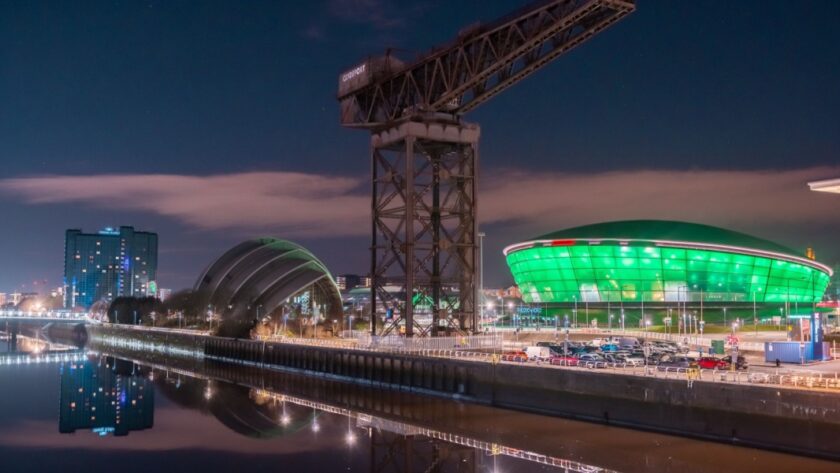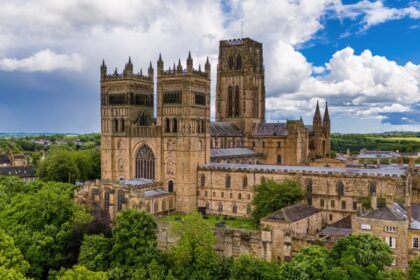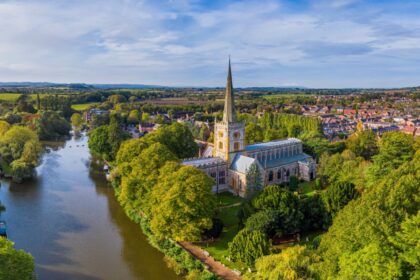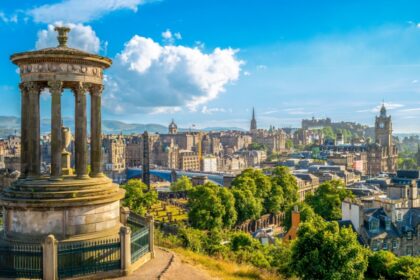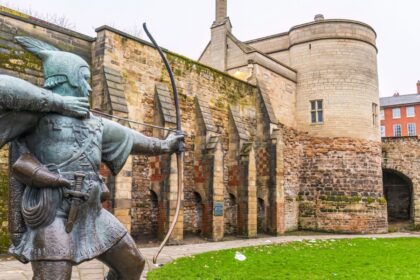Glasgow doesn’t always get the press it deserves. Edinburgh has the skyline and the castle and the festival that turns the city into a human smoothie every August. But Glasgow, with its tangled history and knack for reinvention, is a place where the past runs deeper than the Clyde and the future tends to arrive early and unapologetically. It’s not just a city. It’s a living, swearing, singing, working, reworking idea.
You arrive expecting post-industrial greys and come away dazzled by greens and reds and a few dozen styles of architecture you never knew had names. It’s a city with attitude, yes, but it’s also got range. One moment you’re in a Victorian arcade buying second-hand records next to someone who looks like they once played bass for Mogwai. The next, you’re sipping a black coffee in a gallery that used to be a church that used to be a bank that’s now part of an art school that trained most of Britain’s Turner Prize winners. Glasgow likes to keep you on your toes.
A city forged in smoke and slogans
The story of Glasgow starts, like all good stories, with the Romans giving up. They built the Antonine Wall a bit north of here and then left in a hurry, probably because of the weather. The early settlement grew up around the Molendinar Burn, where a monk called Kentigern (later St Mungo) did a few miracles, founded a church and unintentionally kickstarted what would become Scotland’s biggest city.
For centuries, Glasgow kept things small and ecclesiastical. It wasn’t until the 18th century that the city hit its stride. The tobacco lords turned Glasgow into the second city of the Empire, importing sugar and tobacco from the Americas and exporting both wealth and deeply uncomfortable moral legacies. The Georgian buildings still stand. The money, of course, didn’t stick around.
But it was the 19th century that really defined Glasgow’s modern character. The Clyde shipyards pumped out half the world’s steamships. Steel, coal, textiles and engineering filled the air with noise and soot and wages. People came from the Highlands, from Ireland, from across Europe to make lives here. They packed into tenements and made the best of it. And somehow, amid the grime and grind, a certain gallus spirit took hold. One that could turn hardship into humour and ugliness into purpose.
Art schools and hard hats
By the time Queen Victoria had stopped building train stations, Glasgow was a city of improbable contrasts. You could walk from a slum to a sculpture in less than a minute. Shipyard workers went home to tiny flats with stained-glass panels in the doors. Art Nouveau coexisted with soot-stained stonework. And in the middle of it all stood Charles Rennie Mackintosh, quietly sketching new ideas for chairs and tearooms and entire buildings.
Mackintosh gave Glasgow a new face, a lighter one, full of geometry and intention. The Glasgow School of Art became the physical and spiritual centre of a whole movement. Even now, artists and designers seem to drift towards this city as if the Clyde has some secret undertow that pulls them in.
Meanwhile, the shipyards kept building. During the two World Wars, Glasgow became the workshop of the Allied effort. Tanks, ships, weapons, uniforms, you name it. The city gave its labour and its limbs, and it paid a high price. Post-war, things began to change. Deindustrialisation turned shipyards into silence. High-rises sprouted like concrete regrets. For a while, Glasgow’s future looked as bleak as a midwinter fog over Govan.
Reinvention with a side of wit
But this is Glasgow. It doesn’t do self-pity for long. Starting in the 1980s, the city began to reinvent itself with a kind of muscular optimism. Old warehouses became music venues. Derelict buildings became theatres. The city leaned into culture not because it was fashionable but because it was necessary.
By 1990, Glasgow was European City of Culture. People outside Scotland began to realise that this was a place where you could see cutting-edge art and then get into a spirited debate about it in a pub with a man who called you “pal” even though he had just told you your opinion was nonsense. That’s Glasgow. It keeps things democratic.
The city’s musical output alone deserves its own walking tour. From the pop shimmer of Belle and Sebastian to the crunch of Franz Ferdinand to the near-invented genre that is Mogwai, Glasgow has never stopped producing bands with something to say. And you can still see them in venues that feel more like community halls than arenas, because that’s how it works here. The distance between audience and artist is short. Sometimes it’s just the width of a pint glass.
Museums with muscle and murals with meaning
Today, Glasgow is a city where the past and present elbow each other constantly, but politely. The Kelvingrove Art Gallery and Museum, for instance, looks like something a particularly ambitious duke might have designed while drunk. Inside, you’ll find Salvador Dalí next to a Spitfire, Victorian taxidermy beside postmodern sculpture. It sounds chaotic. It works brilliantly.
The Riverside Museum tells the story of Glasgow’s transport and technology, housed in a building designed by Zaha Hadid that appears to have been folded out of glass and ambition. Over in the East End, the People’s Palace gives you a social history lesson laced with humour, grit and the odd biscuit tin.
But perhaps the most striking transformation of recent years has been on the walls. Glasgow’s mural trail turns alleyways and gable ends into a sprawling outdoor gallery. Giant stags, hyperreal portraits, footballing legends, ballet dancers and whispered jokes now fill the spaces where decay once reigned. It’s regeneration, but not the smug kind.
Parks, pubs and perpetual conversation
Despite its industrial roots, Glasgow is one of the greenest cities in Europe. There are over 90 parks and gardens, from the regal sweep of Kelvingrove Park to the wilder edges of Pollok Country Park, where Highland cattle occasionally interrupt your Sunday walk. The Botanic Gardens offer palm houses and tranquillity while Glasgow Green has been doing its thing since 1450.
The city also excels in the more indoor forms of recreation. Pubs range from wood-panelled institutions serving three types of bitter and seventeen varieties of opinion to sleek modern spaces pouring craft lagers with ridiculous names. Either way, you’ll find yourself talking to strangers within minutes. Glasgow doesn’t do small talk. It does honest, funny, fast-paced banter that leaves you wondering how you accidentally became someone’s best man.
The food scene, too, has had a rethink. You can still get a square sausage on a roll at 8am, and frankly you should. But you can also get Himalayan street food, modern Scottish tasting menus, Syrian mezze and vegan haggis tacos. The city does not lack range.
A visitor destination on its own terms
If you came here just to get to the Highlands quicker or because Edinburgh hotels were full, you’ll quickly realise Glasgow deserves more than a passing glance. It’s a city with stories under every paving slab, humour in every exchange and an artistic pulse that never quite slows down.
What makes Glasgow a world-class place to visit now isn’t just the architecture or the museums or the music. It’s the combination of working-class history, unpretentious creativity and that stubborn refusal to be anyone but itself. Cities that try to look cool often fail. Cities that don’t care if you think they’re cool tend to win you over completely.
Spend a day here and you’ll leave with more than photos. You’ll take home voices, jokes, ideas and the sneaking suspicion that you might need to come back. Because Glasgow gets under your skin. And once it’s there, it stays.

